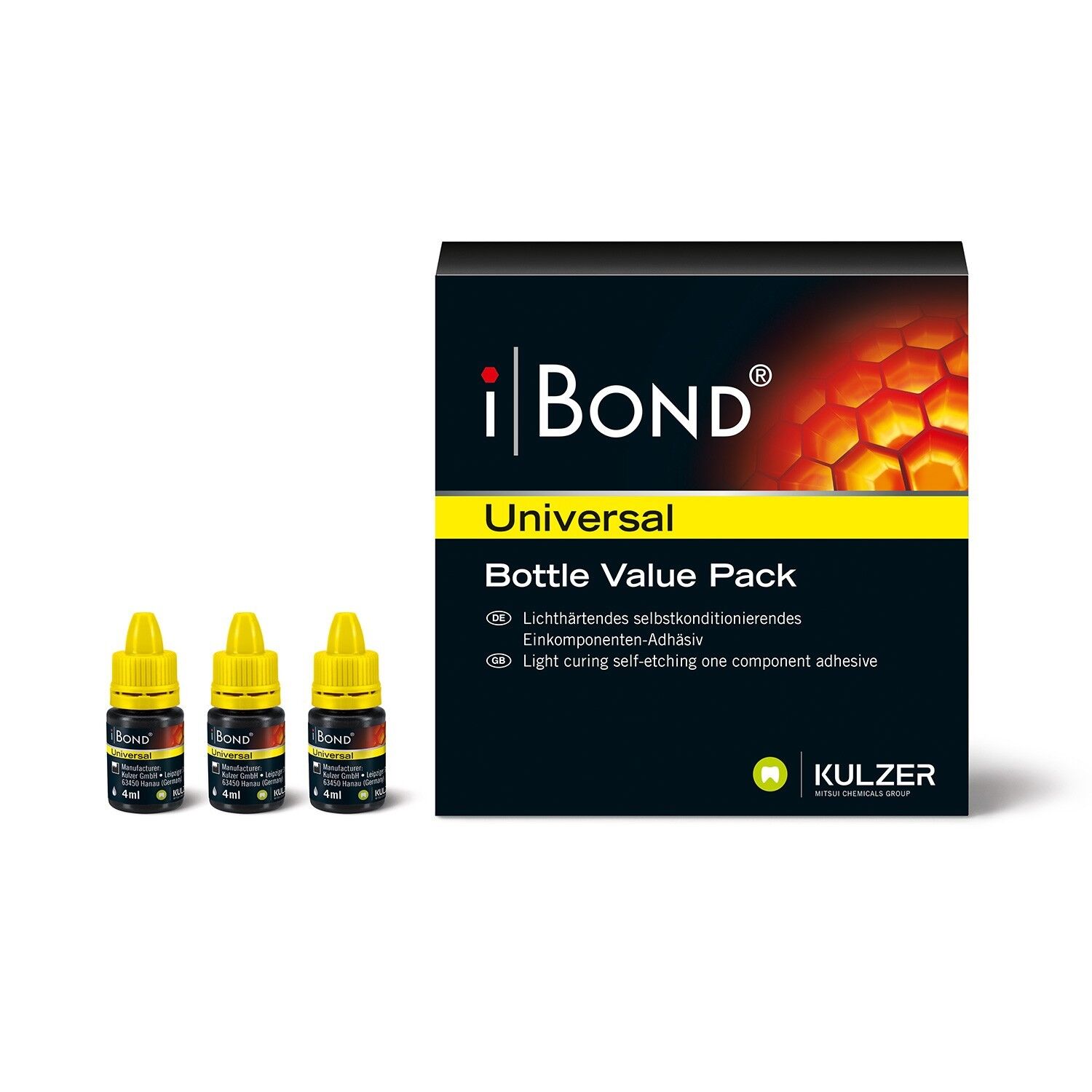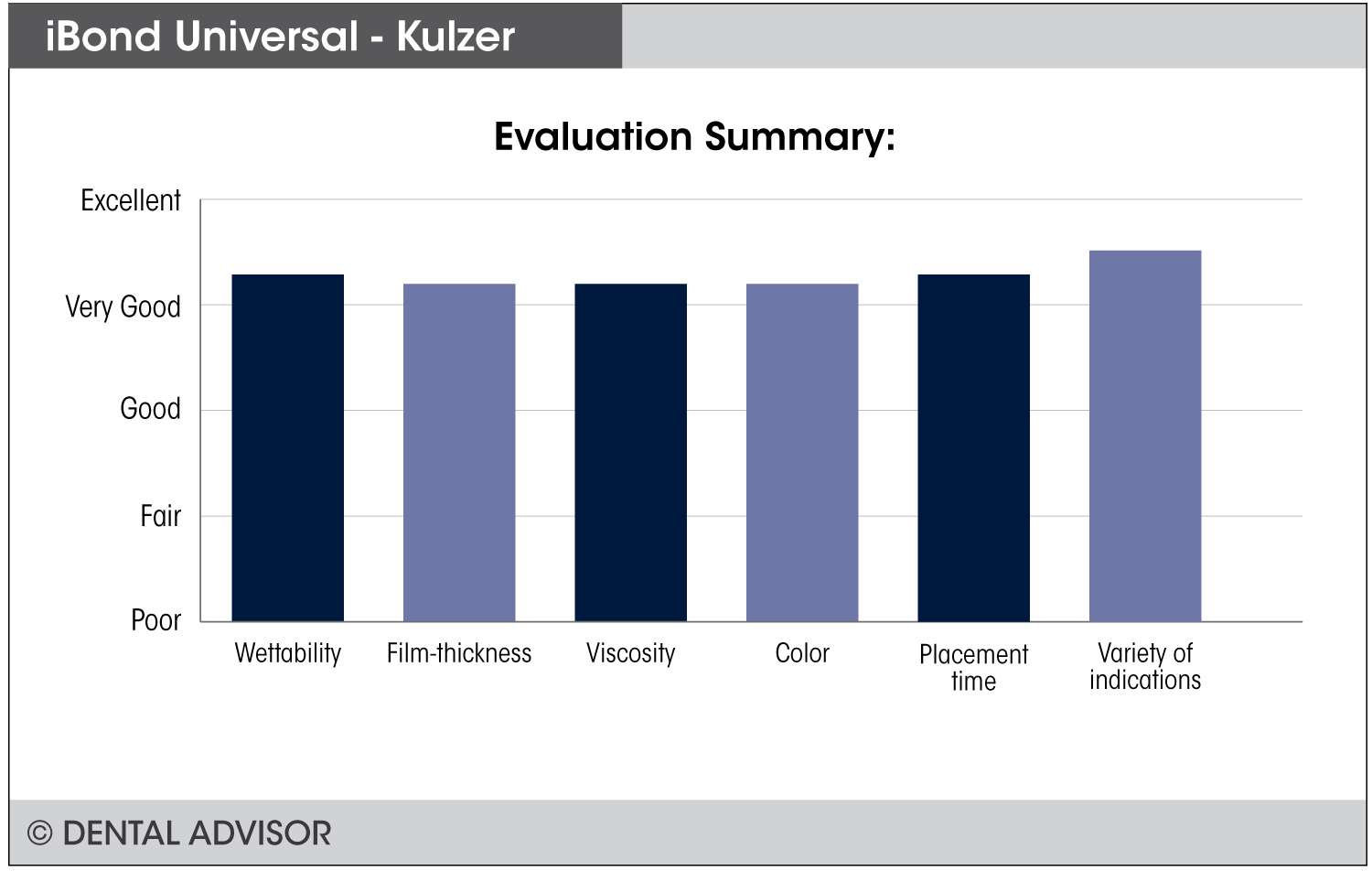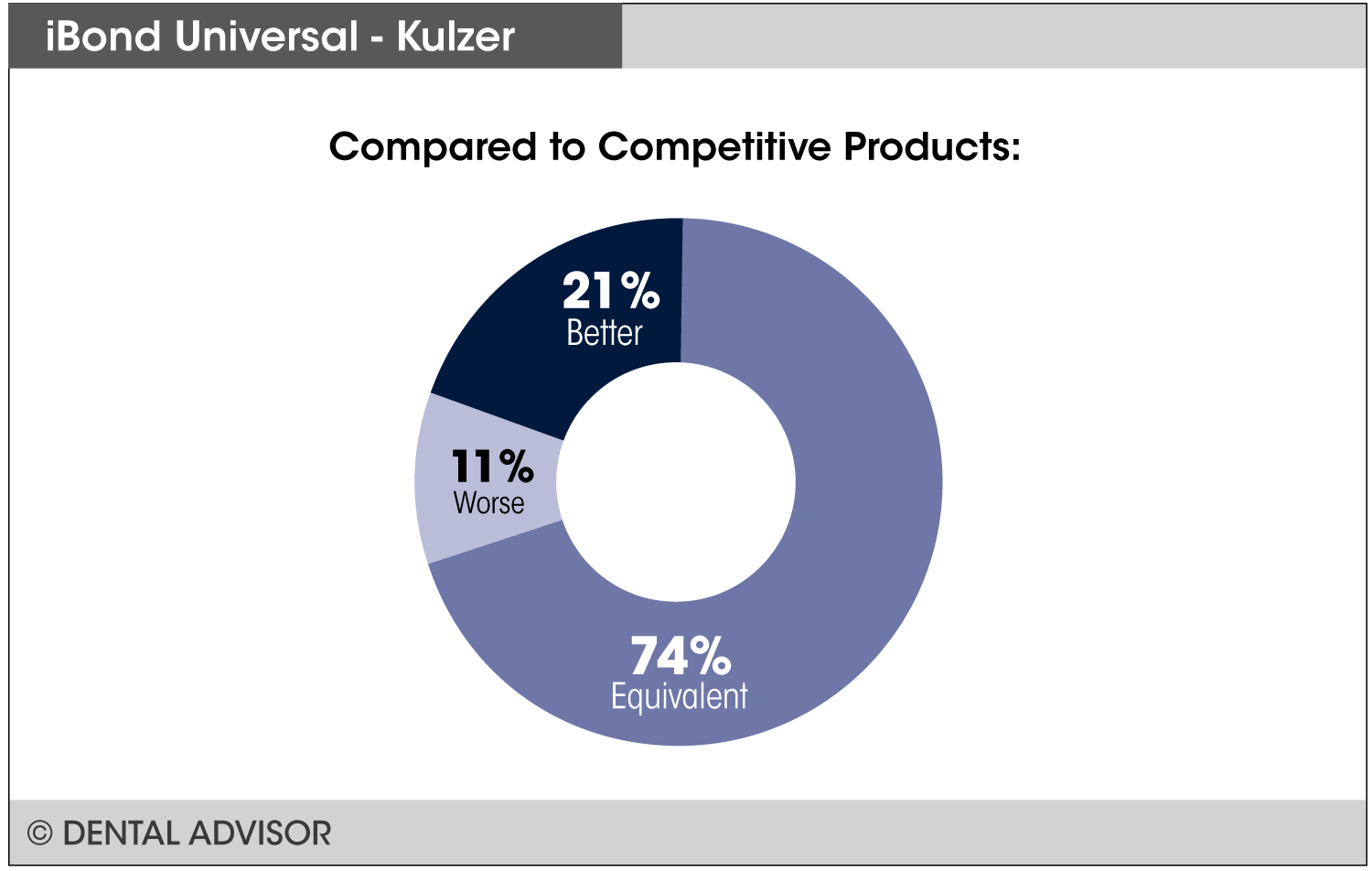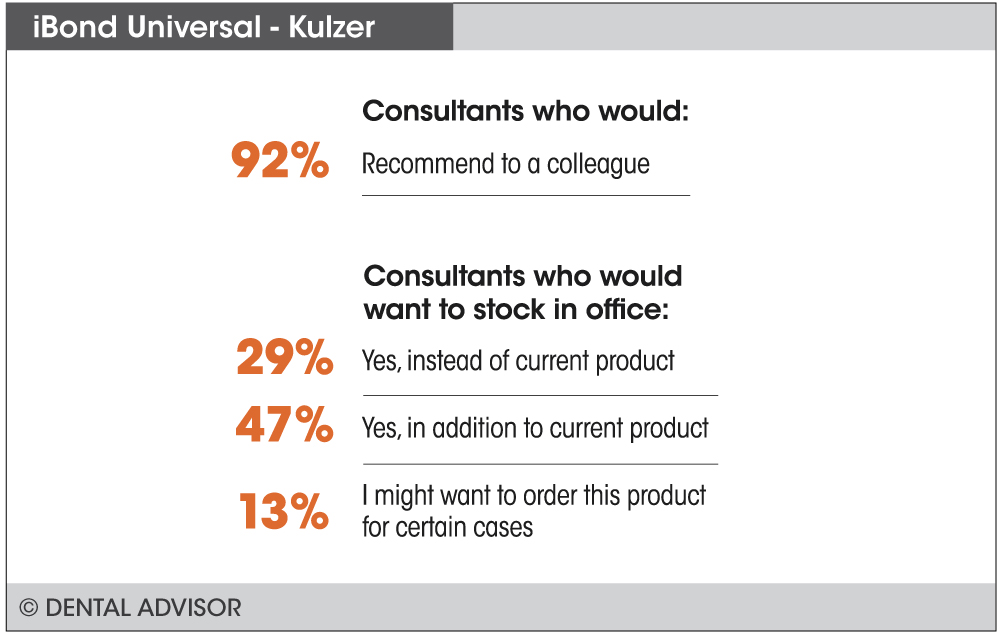Clinical Evaluations
iBond Universal
KULZER
www.kulzerus.com/
Overview
- 38 Clinical Evaluators
- 1000 Total Uses
- 98% Clinical Rating
Consultants’ Comments
- “Spread so thinly and evenly.”
- “I liked the lack of residual color.”
- “Excellent dispensing.”
- “Variety of uses in one adhesive.”
- “Wets the tooth surface well.”
- “The application was faster and easier because the film thickness and viscosity were thinner than my current bond. The excess was also easier to thin out and remove.”
- “Easy to use, one bottle system and no post-op sensitivity.”
- “10-second curing time is great.”
Description
iBond Universal is a universal, light-curing adhesive that:
- Has a unique moisture control system for dentin penetration
- Is an acetone base which quickly evaporates water making this material easier to air dry, reduces technique sensitivity and supports a homogeneous bonding layer
- Is a versatile universal material
- Does not require dual-cure activator
- Can be used in self-etch, total-etch, or selective etch modes
- Has an exclusive drop control bottle
Clinical Tip
- A ceramic primer is necessary for repairs and when using for indirect restorations
Unique Attributes
- Many evaluators commented on the lack of sensitivity they experienced with this material.
- Color of the material was near clear, making it more versatile as there was no concern when placing restorations in the esthetic zone.
Indications
- Bonding of direct restorations for all cavity classes using light-curing, dual-curing or self-curing methacrylate-based composites/compomers.
- Bonding of light-curing, dual-curing or self-curing core build-up materials.
- Sealing of hypersensitive tooth areas.
- Bonding of fissure sealants.
- Sealing of cavities and core preparations prior to temporary cementation of indirect restorations (according to the immediate dentin sealing technique).
- Cementation of indirect restorations with light-curing, dual-curing or self-curing adhesive resin cements.
- Sealing of cavities prior to amalgam restorations.





